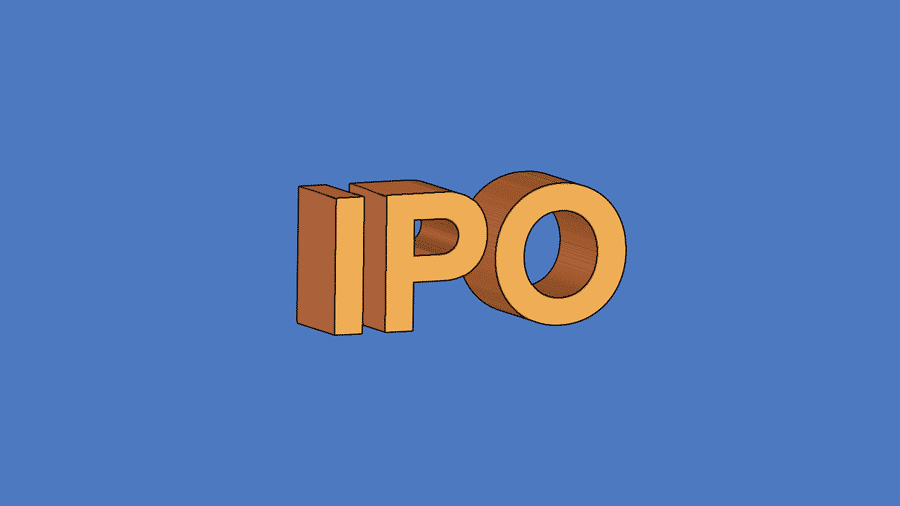The tech market is on IPO watch in 2018. Many investors, employees, and founders alike are betting that this year will finally be the annum in which a host of unicorns manage to stampede into the public sphere. The last few years have been IPO letdowns. Fewer companies than expected have managed to float while big names remain stuck on the horizon.
Who might manage a debut this year? Spotify and Dropbox are known to have filed, Airbnb recently took itself out of contention, and no one really expects Pinterest to pull the trigger. Lesser known Cardlytics is heading public, but with a valuation small enough that it’s hardly making a splash.
But there’s another name that recently crossed our radar that could be a late-2018 IPO or 2019 contender that we hadn’t heard of before. Let’s take a peek at that company, Tenable, a firm that left a trail of growth metrics in public view over the last few years.
$250 Million
We start with a little history. Tenable Network Security (Tenable for short) was founded in 2002 according to Crunchbase. The cybersecurity company has raised over $300 million, including money from Accel Partners and New York’s Insight Venture Partners.
Indeed, Tenable raised an enormous $250 million Series B in 2015 after its 2012 $50 million Series A. That sum of money was followed by a Crunchbase-recorded secondary transaction in 2017, but the company has no more recent capital events that brought money to the company itself.
When Tenable did raise that quarter billion dollars, the Financial Times reported that it did so at a valuation below $1 billion. All the more confounding was the fact that, in the same article, a Tenable founder claimed that the company was profitable.
With all that in place, we can now work through the firm’s financial receipts, at least so much as we can collate from its various releases over the years. The firm’s disclosures picked up around the time it raised its Series B, giving us a picture from about a year before that moment and onwards.
Finally, we’ll cap the project off with some new numbers from the firm that underscores why we are discussing its performance in the context of 2018 IPOs.
This will be fun; I promise.
$250 Million, Redux
Tenable has been surprisingly open about its growth, excluding its revenue growth. Instead, the firm has shared its billings over the past few years.
So what is a billing? It’s not revenue. Instead, it’s a revenue precursor. To prevent any sort of confusion between its disclosures and our work today, I asked Tenable to define billings for us, so that we would know precisely what they meant by it. (There’s a history of private companies being slightly loose with this sort of thing, so we like to double check as often as we can when it comes to financial figures.)
Tenable’s billings are, in its conception, “the aggregate value of the contracts [it] invoice[s] each year.” That’s simple enough. Tenable also calls itself as a software-as-a-service company (SaaS). That matters as it bills contracts “upfront,” which it then counts as billings.
We pick up the Tenable growth story around the time that it raised its Series B. That means that metrics it shared that were trailing are indicative of the company’s growth story it told when it raised that $250 million check.
From that foundation, let’s zip back to November 2015, the same period that Crunchbase has on file for its Series B. In that month, Tenable claimed that it had expanded its billings 50 percent over the preceding year, and had reached “a run rate that exceeds $100 million.” Regarding the $100 million number, we confirmed that that is a billings run-rate figure. (If you can spot why that term might feel slightly odd, here are seven points).
Summarizing, Tenable grew about half to a nine-figure billings-pace ahead of its last round of capital.
Moving ahead to December 2016, Tenable said that it had “increased billings by more than 40 percent,” a somewhat ambiguous comment given that it didn’t have a timeframe attached. Happily, in March of 2017, the firm made it plainer, saying that its billings “grew in excess of 40 percent in 2016.”
So Tenable grew its billings over 50 percent in 2015 (roughly) and over 40 percent in 2016 (more precisely).
After that point, Tenable’s self-reporting became more granular. In July of 2017, the company reported that it booked over $50 million in billings during the second quarter and that it had recorded “50 percent year-over-year billings growth for both the second quarter and for the first half of 2017.”
The firm added that it had closed its fifth “consecutive quarter of 45 percent billings growth or higher.”
At the same time, the firm noted that it had pushed recurring revenue as a part of its revenue mix to over 90 percent in the period. That implies that the firm’s transition from “a perpetual license model” to SaaS had worked.
Moving ahead to November of 2017, Tenable said that it had record billings in the third quarter, implying another greater-than-$50-million quarter. The company also said that it had extended its streak of 45 percent or greater year-over-year billings growth to six quarters. That’s a pretty good run for a company as old as Tenable.
But that’s all history, more or less. Let’s peek at the latest results.
Q4 2017 And Other Numbers
During the last days of January, Tenable dropped some new numbers that capped off its prior reporting by giving us some more concrete figures.
The firm claimed that it booked $250 million in billings last year. That’s a useful metric to lever off of to track its future performance.
In the same release, the firm announced greater than 45 percent growth in 2017, implying somewhere around $172 million to $168 million in 2016 bookings. (That mostly makes sense, as the firm was on a greater-than-$100 million billings run rate towards the end of 2015, and it grew by more than 40 percent in 2016. It feels like we are losing a few million in billings somewhere; however, the numbers are close enough and directionally honest, so we don’t have to fret too much.)
Now the fun bit comes into play. Instead of reporting that it had its seventh quarter of 45 percent or greater year-over-year billings growth after reporting its third quarter as the sixth, Tenable said this:
The fourth quarter of 2017 also marks the seventh consecutive quarter of greater than 40 percent year-over-year billings growth for the company.
Aha. The company pared its result by 5 percent to greater than 40 and not greater than 45 percent. So we know that the firm’s billings expansion in the fourth quarter of last year was likely between 40 and 44 percent.
Given the higher base that the firm is operating from in terms of trailing aggregate billings, that’s not a diss. But it does let us dial-in one growth number for the firm pretty carefully.
That brings us to the end of the company’s public notes on its financial performance. Happily, the company gave us a few more data points.
$189 Million
To help color in Tenable’s growth trajectory, the company told Crunchbase News it had $189 million in revenue during 2017. So from $250 million in billings came $189 million in actual revenue.
That puts the firm in IPO territory of course—especially when we recall that it had self-claimed profitability back in 2015. I presume that the firm dipped into negative operating margins after raising the quarter-billion, but if it didn’t take too deep a plunge, it could still be in good profit-shape, at least for a SaaS company.
Tenable also told Crunchbase News that its revenue grew more than 50 percent during 2017, putting its revenue growth a bit ahead of its billings growth. How public market investors might weigh that isn’t clear from this distance—we’d need an S-1 to better understand that point—but Tenable seems pretty content from its perch.
Asked if it has plans to raise additional capital in the next quarter or two, the firm said:
While as a general practice we do not speculate on potential future plans, the company’s strong and consistent performance gives us a number of possible options. As always, we’re focused on building a market-defining security company.
So there are no real surprises here. But when we narrow down to the IPO question, Tenable told Crunchbase News “we have the growth and scale that would be attractive to public investors, but we’re focused on building a great company.”
Which we can either read as a brag, a hint, or nothing. We probably won’t know which until it files privately.
What We Have Learned
Too often an enterprise-focused company files its S-1 and the larger tech press gears up to write about it from no context. In this case, the company’s 2017 results release caught our eye, and we managed to extract a bit more from its preceding releases even before Tenable decided to dish. That gave us a pretty uncommon chance to cover a potential IPO with actual numbers and no S-1. So we took it.
Now we all know that not only can SaaS transitions work, but they can work at scale. That and the cybersecurity sector is hardly dead.
More when Tenable files.

Stay up to date with recent funding rounds, acquisitions, and more with the Crunchbase Daily.






![Illustration of stopwatch - AI [Dom Guzman]](https://news.crunchbase.com/wp-content/uploads/Halftime-AI-1-300x168.jpg)
67.1K Followers